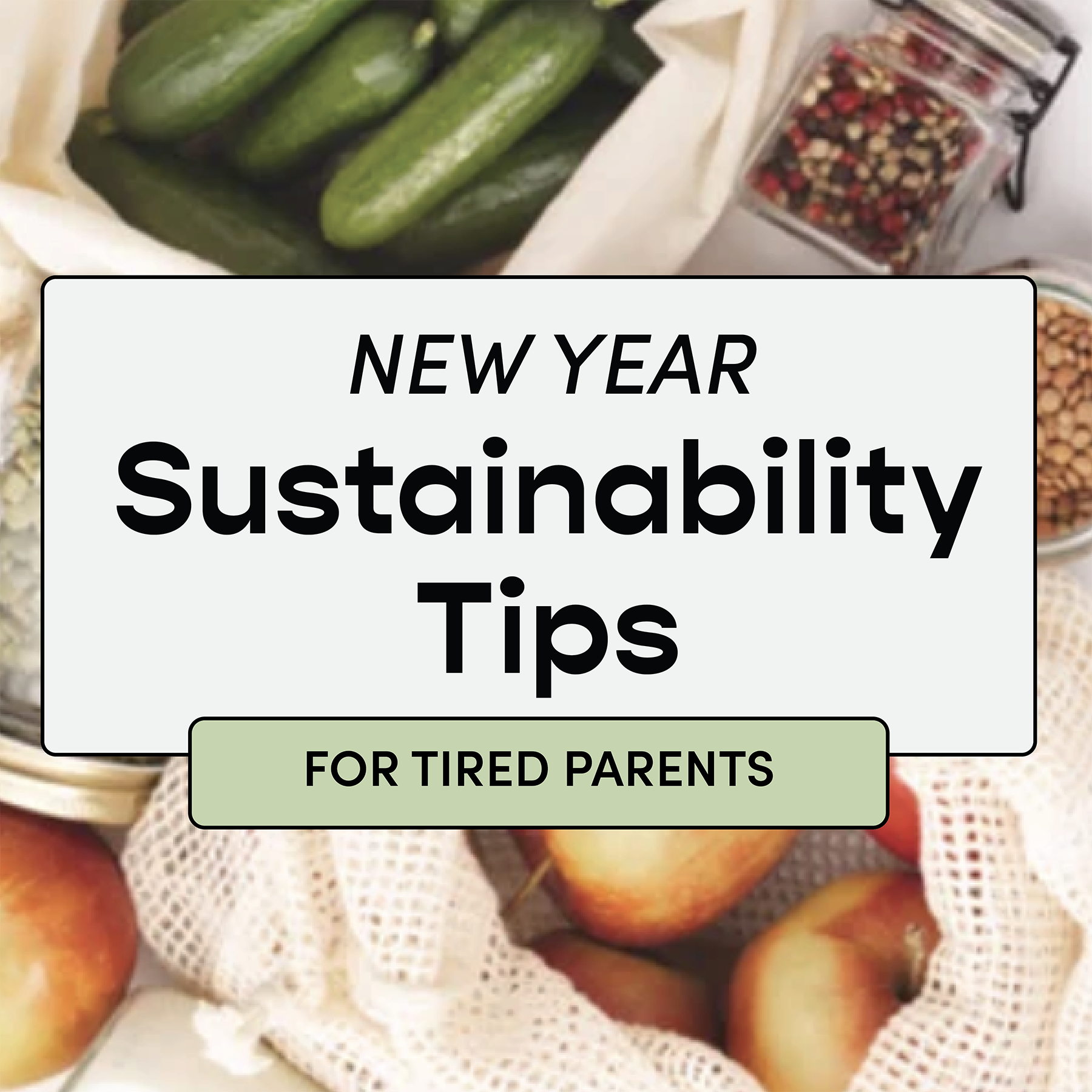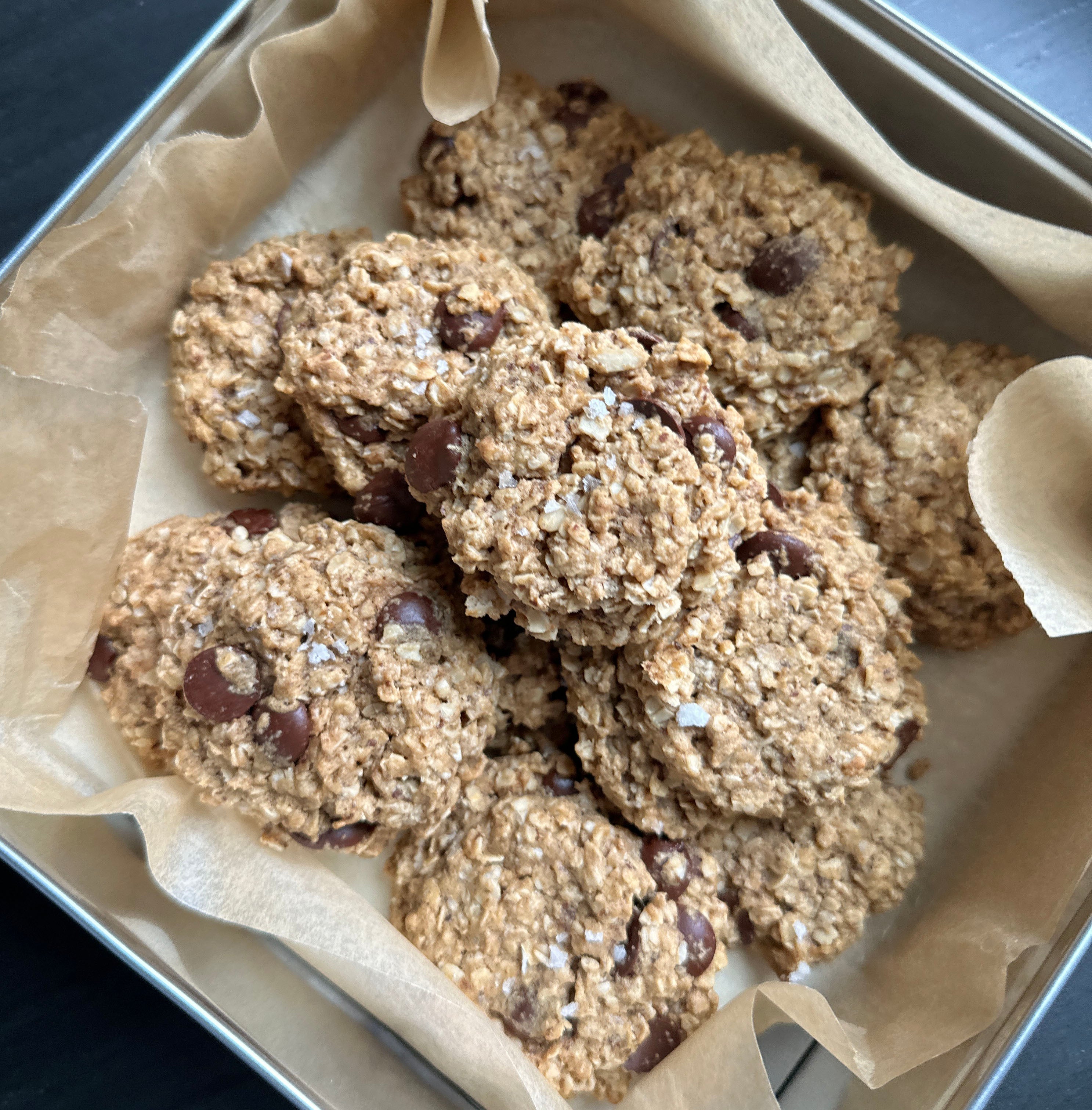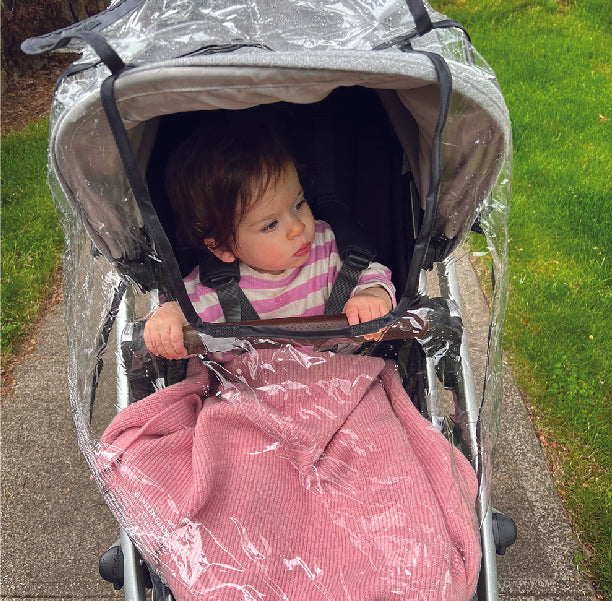Sustainability Resolutions for Tired Parents

Real World Tips for Big Change
Some of us have grand ambitions to be sustainability all stars. We dream of shopping exclusively in-season at local farmers markets, somehow getting place to place without cars, even swearing off air travel altogether. Then there are those of us taking care of tiny humans. And although we want them to have the brightest future (ideally on a planet that's not uncomfortably warm), we're also pretty tied up with the day-to-day managing of said tiny humans. This sustainability guide is for you, tired parent with lots to do. Here we share 3 easy steps to take every day that collectively have a massive impact for the planet.

1. Reduce Food Waste
Why: Producing food requires a significant amount of land, water and other resources. The global food system is responsible for around one-third of the world's annual human-caused emissions. Now get this: greenhouse gases emitted from wasted food account for about half of these emissions! So, before we start arguing with Aunt Myrtle about what to eat in order to reduce water usage and methane production, we need to get better at actually using the foods we buy. Whether that's dino nuggets and tater tots or organic berries and free range eggs.
Here's How:
- Start with a plan. The fastest route to reducing food waste is to create a loose meal plan so you know what to buy and when you'll use it. Apps like Hungryroot or Emeals can help you get started. We love plotting out the week's dinners (plus takeout nights!) on Saturdays and having Instacart deliver on Sunday mornings, but find what works best for your family.
- Take inventory. Do a deep dive in your pantry, fridge and freezer to see what ingredients you already have on hand to use in your upcoming week's meals. This will save you money and cut down on waste.
- Be a food rescuer. Buy your groceries directly from Imperfect Foods or Misfits Market and get sustainable, affordable groceries delivered to your door. Excess inventory and small cosmetic differences would otherwise send this high quality food to the bin, but you can buy it for 40% off retail.
- Store food properly to maximize freshness. Whether it's storing whole avocados and cut veggies in water or soaking berries in a quick vinegar solution, it pays to get smart about storage. We love @kalejunkie's unique hacks.
2. Compost
Why: When it comes to disposing of kitchen scraps, the method really matters. 50% of your typical municipal garbage bag is compostable, ie potential fertile ground. Yet food waste occupies about 25% of landfills where it breaks down slowwwly, emitting a whole bunch of methane. To get technical, composting lowers greenhouse gases by improving carbon sequestration in the soil and by preventing methane emissions through aerobic decomposition.
Here's How:
- The most straight forward approach to composting for both apartment dwellers and homeowners alike is municipal. Simply collect your food waste, dump it in the green bin and have the city do your dirty work. Resources differ from state to state, so check out this guide.
- If you don't have any local options for compost pickup and you have some yard space, consider a backyard composter. Bonus: free fertilizer!
- Maybe the thought of meeting a worm face-to-face terrifies you. Honestly, same. In that case, a countertop composting machine like Lomi is for you. It will set you back $279 but it will also protect you from (shudder) fruit flies and their ilk.
3. Ditch Synthetic Fabrics
Why: Put simply, synthetic fabrics like polyester, nylon and acrylic are hard on the environment. Mostly derived from petrochemicals, synthetics are non-biodegradable and linger in landfills for hundreds of years. On top of exacerbating microplastics pollution, they also require massive amounts of energy (and more fossil fuels) to produce. There are just SO many reasons to avoid synthetic fabrics, we kind of built a whole company around it.
Here's How:
- Educate yourself on the basics of everyday fabrics. If the fabric's fiber exists in nature in its fiber state, it's natural. If it doesn't, it's synthetic. Examples of natural fibers include: merino, cotton, cashmere, and linen.
- Swap synthetics for natural fabrics wherever possible. Bonus: wearing natural fibers is healthier for the whole family. Take a hard look at all the fabrics in your home environment from wardrobe to bedding and prioritize natural fibers worn closest to the skin and for prolonged periods.
- Natural fibers require the care of animals or plants and are generally more expensive than synthetic. Ways to shop within a budget include shopping annual sales, stalking Poshmark or Depop for your favorite brands, thrifting and clothing swaps.
- Don't let your movement resolutions get in the way of healthier fabrics. Check out natural activewear from brands like MATE the Label and Groceries.
References:
1. https://www.carbonbrief.org/in-depth-qa-what-food-waste-means-for-climate-change/#:~:text=The%20global%20food%20system%20from,emissions%2C%20a%202023%20study%20found.
2. https://www.epa.gov/snep/composting-food-waste-keeping-good-thing-going
3. https://www.humbleunique.com/en/blog/the-impact-of-synthetic-fibers-on-the-environment#:~:text=Energy%20Consumption%20and%20Carbon%20Emissions,but%20also%20exacerbates%20climate%20change.
4. https://kualesa.co/blogs/news/why-you-should-stop-wearing-synthetic-clothes#:~:text=They%20expose%20you%20to%20harmful%20chemicals&text=Let%20that%20sink%20in.,skin%20rashes%20to%20its%20wearers.




Comments